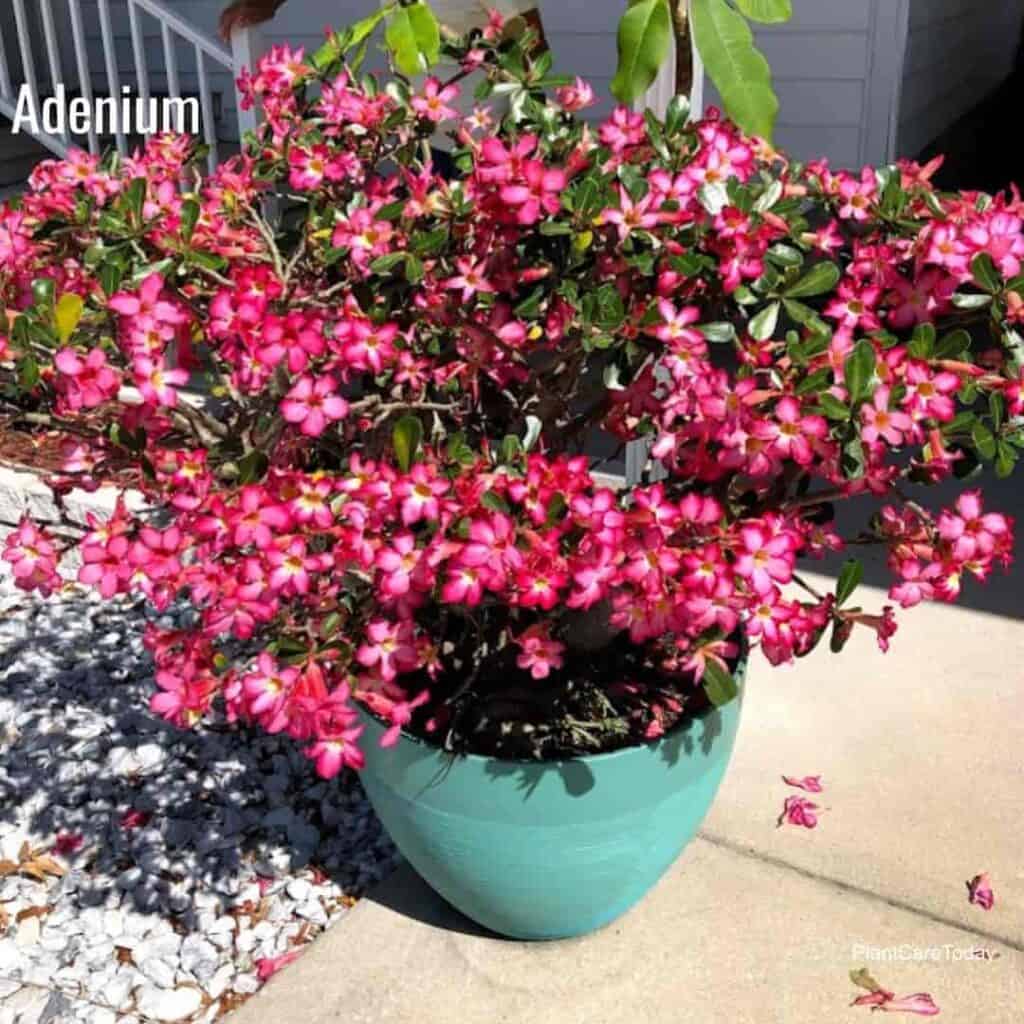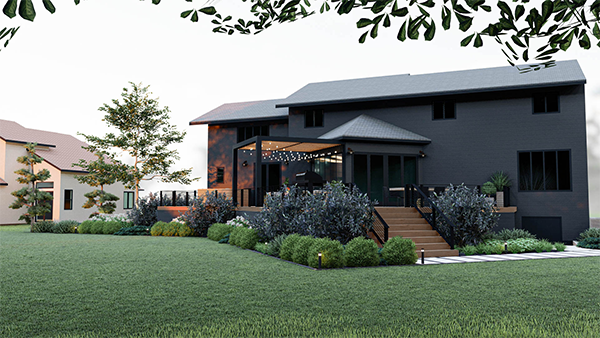[ad_1]
Flowering Adeniums, aka desert roses, are a sight to behold. There is lots of variation in the Adenium genus with only five official species.
Some enthusiasts argue there are even fewer species, and most are natural variants. Whether you believe Adenium arabica is a species or a subspecies of Adenium obesum, one thing is for sure: Adeniums are lovely.
Many new to growing Adeniums, have trouble getting their Desert Rose to flower.
In the right conditions, a Desert Rose plant produces gorgeous flower displays in a variety of flower colors.
But what about a plant that seems reluctant to flower?
Read on to find out what you might be doing wrong and how to get your plant to truly shine.
How To Make A Desert Rose Flower
Failure to flower is almost always the result of improper conditions. With proper care your desert rose will show off its flowers.
If your plant is a couple of years old, here are the leading causes of a flowerless Adenium.
Fertilizer For Your Adenium
This is probably the easiest thing to forget since desert roses grow naturally in very poor or rocky soil.
However, feeding your Adenium plant regularly will give it the nutrients needed to be healthy, and it will thank you with more and better blooms.
When you’re using a fertilizer designed specifically for desert roses and still not getting blooms, you can try one of two things: increasing the dose and supplementing.
To increase the dose, aim for a water-soluble liquid fertilizer and apply as instructed for outdoor plants, with half that strength for indoor or container plants.
Feed an outdoor plant monthly during spring and summer and every 1 to 2 weeks for container plants.
Watch for warning signs of overfeeding and cut back if necessary.
Supplementing is a little easier.
Just add some phosphorous (or switch to a phosphorus-rich mix) or bone meal during your regular feedings.
The extra phosphorus is often enough to encourage blooms on a stubborn plant.
Desert Roses Pest and Disease Infestation
A plant that’s under attack from a pest, fungus, or disease may be unable to produce blooms.
Check for any signs of damage to the leaves and branches.
Many of these problems cause the plant to lose sap, which is its version of blood.
This makes the plant more lethargic and will continue to affect its ability to produce flowers and new growth until addressed.
Transplant Shock From Repotting
Plants, like people, can get depressed when suddenly uprooted and stuck in a new home. Plants show ‘depression” it as transplant shock.
During this time, your adenium will be focused on root growth and getting used to the new soil. When transplanting use a potting mix recommended for succulent plants. If using a regular potting soil add extra perlite and or pumice to increase the drainage.
Learn What Type Of Soil Is Best For Desert Rose?
Since you will need to repot a container-grown adenium every two years or so, you may find the plant reluctant to flower in those years.
This is perfectly normal and may or may not happen every time you repot.
Sunlight
Adequate sunlight is crucial for a desert rose, and it’s easy for it to get less than needed, especially indoors.
Your plant needs full or bright sunlight for at least 6 hours of sun every day to be at its best.
Try moving your plant to a sunny spot with better light conditions if it’s not blooming, and that alone can often solve the problem.
Improper Watering of Your Desert Rose
Finally, watering your Desert Rose can be a significant factor in blooming issues.
Producing flowers can take a lot of water, which usually is stored in the plant’s caudex.
However, while the plant is highly drought-tolerant, inadequate watering can result in the plant failing to bloom.
Alternatively, too much water or inadequate drainage can lead to root rot.
Damage to the roots will cause the plant to stop producing blooms while attempting to fend off any infection and restore its root structure.
[ad_2]
Source link










 + Planting String of Watermelon Succulents
+ Planting String of Watermelon Succulents  with Garden Answer
with Garden Answer


